Ancient Beliefs About The Soul
Ellen Lloyd - AncientPages.com - Do all living beings have a soul? What happens to the soul after death? For as long as anyone remembers these questions have occupied the minds of some of the world’s greatest philosophers and scientists. The concept of the soul is very old. Ancient beliefs about the soul can be found among many cultures worldwide.
A 3,000-year-old stone memorial in the Iron Age city Sam’al, Turkey reveals our ancestors were very curious about the soul.
 Representation in the round of the soul-Ba, arms raised to receive water and food from the gods (Hildesheim museum, Germany). Image credit: Einsamer Schütze - CC BY-SA 3.0
Representation in the round of the soul-Ba, arms raised to receive water and food from the gods (Hildesheim museum, Germany). Image credit: Einsamer Schütze - CC BY-SA 3.0
The 800-pound, three-foot-tall piece of rock, has an incised picture of a man, the deceased, who was presumably cremated. The inscription on the monument was made by a man named Kuttamuwa and words explain that the soul of the now dead man resided within the stone slab. So, people believed the soul lived in the stone.
Belief of the soul is linked with human consciousness
The recognition of a soul appeared hand-in-hand with human consciousness. It is likely it was first voiced when we had a language to put the idea of a soul into words. That would place the time frame for a soul around 200,000 years ago when humans experienced a cultural explosion which they expressed in art, clothing, and evidence of religion.
Charon (Greek) guides dead souls to the Underworld. 4th century BC. Image credit: Bibi Saint-Pol - Public Domain
Ancient Greeks’ view about the soul
The idea that we have a soul can be encountered in many of the world’s religions, especially in the ancient world. Greek philosophers like Plato saw the world as a spiritual being, and the idea of the world soul received the name anima mundi.
Anima mundi was a spiritual essence that enveloped everything in the world and all of nature.
From Homeric poems, we learn that the soul is something that a human being risks in battle and loses in death. On the other hand, it is what at the time of death departs from the person's limbs and travels to the underworld, where it has a more or less pitiful afterlife as a shade or image of the deceased person.
Later, people were no longer convinced that the world was so spiritually developed. With creation came sin and a separation between the worldly and the divine, and the world lost its soul.
Renaissance artists revived the concept of the soul
During the Renaissance, the concept of a soul was brought to life again. Renaissance artworks attempted to convey the message there is a a spiritual connection between the world and all living things.
While Christianity firmly believed in a divide between the worldly and the spiritual, artists saw concepts like the sacred proportions as proof that everything was connected.
Ancient Egyptian concept of the soul
The ancient Egyptians believed that a human soul was made up of five parts: the Ren, the Ba, the Ka, the Sheut, and the Ib. In addition to these components of the soul, there was the human body. An important part of the Egyptian soul was thought to be the Ib or heart. The heart was the key to the afterlife. A person's shadow Sheut was always present. The shadow was also representative to Egyptians of a figure of death, or servant of Anubis, a god associated with mummification and the afterlife in ancient Egyptian religion. The shadow was depicted graphically as a small human figure painted completely black.
 The Egyptian ba, or the personality part of the soul, hovers over its mummy. Scanned from The Egyptian Book of the Dead: The Book of Going Forth by Day by James Wasserman et al. Public Domain
The Egyptian ba, or the personality part of the soul, hovers over its mummy. Scanned from The Egyptian Book of the Dead: The Book of Going Forth by Day by James Wasserman et al. Public Domain
As a part of the soul, a person's name - ren was given to them at birth. The ancient Egyptians believed that it would live for as long as that name was spoken, which explains why efforts were made to protect it and the practice of placing it in numerous writings.
The 'Ba' was everything that makes an individual unique, similar to the notion of 'personality. The Ka was the Egyptian concept of vital essence, that which distinguishes the difference between a living and a dead person, with death occurring when the ka left the body.
Ancient Egyptians believed that death occurs when a person's ka leaves the body. Ceremonies conducted by priests after death, including the "opening of the mouth", aimed not only to restore a person's physical abilities in death but also to release a Ba's attachment to the body. This allowed the Ba to be united with the Ka in the afterlife, creating an entity known as an "Akh" meaning "effective one").
Head-hunting tribes believed head contained a soul-substance
According to a Dutch missionary working and living in Indonesia from the 1890s, head-hunting tribes valued heads of their enemies not because they were trophies, but because they contained a soul-substance. This soul-substance could be transferred from one person to another. It could be stored and make the entire community stronger.
Taking heads increased the soul-substance of a family, a community, or a village. The village became more fertile, crops would be healthier and productive, and animals would be bigger and stronger, all ultimately leading to a better life. Without extra soul-substance in the villages, crops would wither and die, villagers would fall ill, and the community itself would fall into decline.
The concept of the soul remains an unsolved puzzle in modern times. Much has been written and said about the existence of the soul and it still one of the greatest mysteries of all times.
Written by Ellen Lloyd – AncientPages.com
Copyright © AncientPages.com All rights reserved. This material may not be published, broadcast, rewritten or redistributed in whole or part without the express written permission of AncientPages.com
More From Ancient Pages
-
 Jack The Ripper Letter Mystery Solved By Forensic Linguist
Archaeology | Feb 1, 2018
Jack The Ripper Letter Mystery Solved By Forensic Linguist
Archaeology | Feb 1, 2018 -
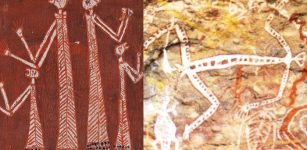 Immortal Mimi Spirits In Beliefs Of Aborigines Of Arnhem Land
Featured Stories | Mar 26, 2020
Immortal Mimi Spirits In Beliefs Of Aborigines Of Arnhem Land
Featured Stories | Mar 26, 2020 -
 Mystery Of The Bizarre Dark Figure Vanishing Into Thin Air Seen By Hotel Guests And Staff
Featured Stories | Mar 15, 2019
Mystery Of The Bizarre Dark Figure Vanishing Into Thin Air Seen By Hotel Guests And Staff
Featured Stories | Mar 15, 2019 -
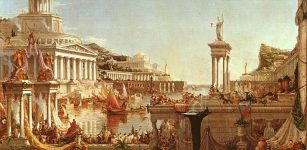 Did Lead Poisoning Cause The Fall Of The Roman Empire?
Archaeology | Oct 24, 2017
Did Lead Poisoning Cause The Fall Of The Roman Empire?
Archaeology | Oct 24, 2017 -
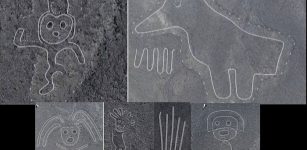 168 Unknown Geoglyphs Discovered In The Nazca Desert By Drones
Archaeology | Dec 19, 2022
168 Unknown Geoglyphs Discovered In The Nazca Desert By Drones
Archaeology | Dec 19, 2022 -
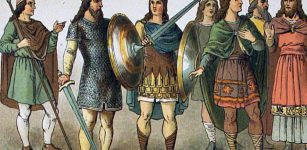 Being Anglo-Saxon Was A Matter Of Language And Culture, Not Genetics
Archaeology | Jun 23, 2021
Being Anglo-Saxon Was A Matter Of Language And Culture, Not Genetics
Archaeology | Jun 23, 2021 -
 2,500-Year-Old Mummy Workshop Discovered At Saqqara Necropolis, South Of Cairo, Egypt
Archaeology | Jul 18, 2018
2,500-Year-Old Mummy Workshop Discovered At Saqqara Necropolis, South Of Cairo, Egypt
Archaeology | Jul 18, 2018 -
 Earliest Known Abecedary Engraved On Shard Of Pottery Dated To 15th Century BC – Deciphered
Archaeology | Oct 23, 2015
Earliest Known Abecedary Engraved On Shard Of Pottery Dated To 15th Century BC – Deciphered
Archaeology | Oct 23, 2015 -
 Early Māori Settlement On The Subantarctic Islands -Uncovering Some Of The Unknown
Archaeology | Jul 20, 2023
Early Māori Settlement On The Subantarctic Islands -Uncovering Some Of The Unknown
Archaeology | Jul 20, 2023 -
 Saraswati – Hindu Goddess Of Knowledge, Learning And Vedic Symbol Of Speech, Vach
Featured Stories | Jun 23, 2021
Saraswati – Hindu Goddess Of Knowledge, Learning And Vedic Symbol Of Speech, Vach
Featured Stories | Jun 23, 2021 -
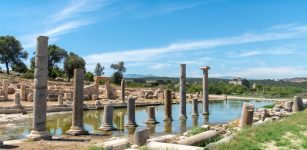 New Study Shows How The Ancient World Adapted To Climate Change
Archaeology | Jun 28, 2022
New Study Shows How The Ancient World Adapted To Climate Change
Archaeology | Jun 28, 2022 -
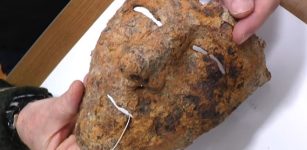 Extremely Rare Roman Cavalry Parade Mask Discovered In Romania
Archaeology | Feb 8, 2023
Extremely Rare Roman Cavalry Parade Mask Discovered In Romania
Archaeology | Feb 8, 2023 -
 On This Day In History: Favorite Ship Of King Henry VIII ‘Mary Rose’ Sank – On July 19, 1545
News | Jul 19, 2016
On This Day In History: Favorite Ship Of King Henry VIII ‘Mary Rose’ Sank – On July 19, 1545
News | Jul 19, 2016 -
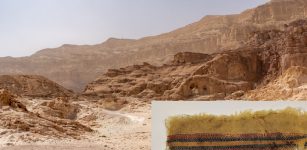 Has An Unknown Ancient ‘Israel Silk Road’ Been Discovered?
Archaeology | Jan 20, 2023
Has An Unknown Ancient ‘Israel Silk Road’ Been Discovered?
Archaeology | Jan 20, 2023 -
 Missing ‘Delmenhorst’: 17th Century Danish Warship From ‘Battle Of Fehmarn’ Found
Archaeology | Sep 22, 2020
Missing ‘Delmenhorst’: 17th Century Danish Warship From ‘Battle Of Fehmarn’ Found
Archaeology | Sep 22, 2020 -
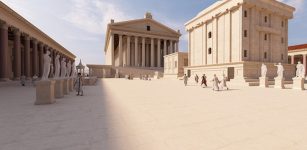 Magnificent Virtual 3D Tour Of Famous Temples Of Baalbek – Now Available To Anyone
News | Apr 7, 2021
Magnificent Virtual 3D Tour Of Famous Temples Of Baalbek – Now Available To Anyone
News | Apr 7, 2021 -
 Young Boy Discovers Rare Ancient Roman Treasure In Sussex, UK
Archaeology | Apr 15, 2024
Young Boy Discovers Rare Ancient Roman Treasure In Sussex, UK
Archaeology | Apr 15, 2024 -
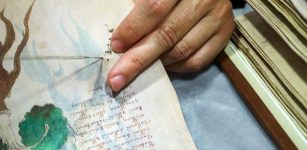 Enigmatic Voynich Manuscript: Computer Scientists From Alberta Use AI To Decipher Document
Archaeology | Jan 31, 2018
Enigmatic Voynich Manuscript: Computer Scientists From Alberta Use AI To Decipher Document
Archaeology | Jan 31, 2018 -
 First European Farmers’ Heights Did Not Meet Expectations
Archaeology | Apr 8, 2022
First European Farmers’ Heights Did Not Meet Expectations
Archaeology | Apr 8, 2022 -
 Before Ragnarok: Horrifying Fimbulwinter In Norse Mythology Was Based On Real Events
Featured Stories | Nov 1, 2016
Before Ragnarok: Horrifying Fimbulwinter In Norse Mythology Was Based On Real Events
Featured Stories | Nov 1, 2016

